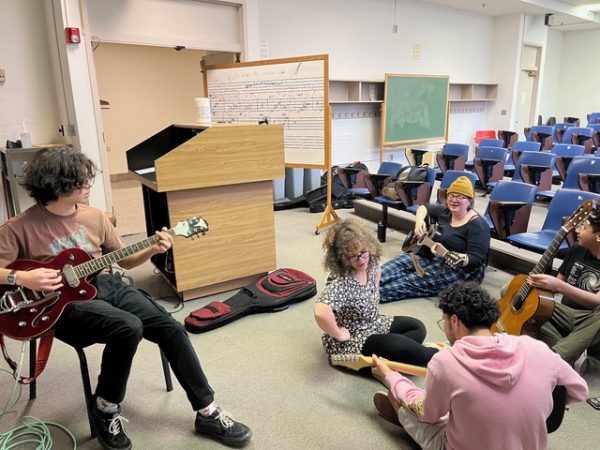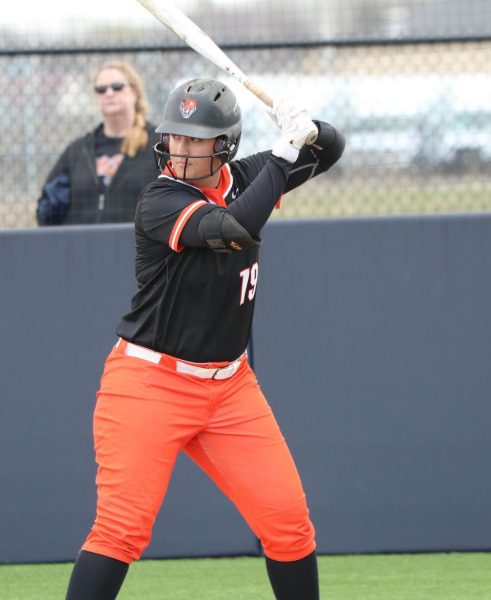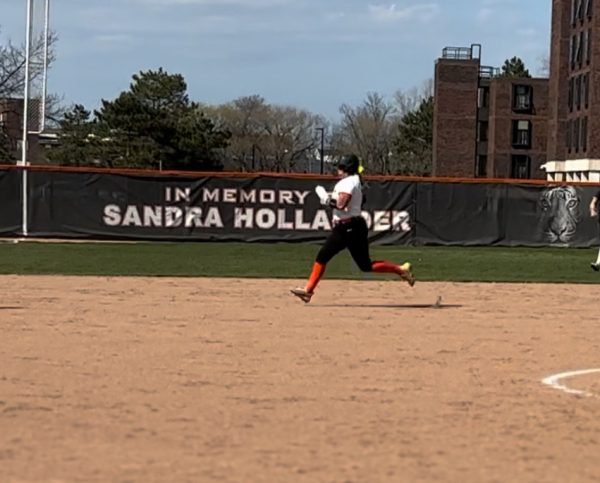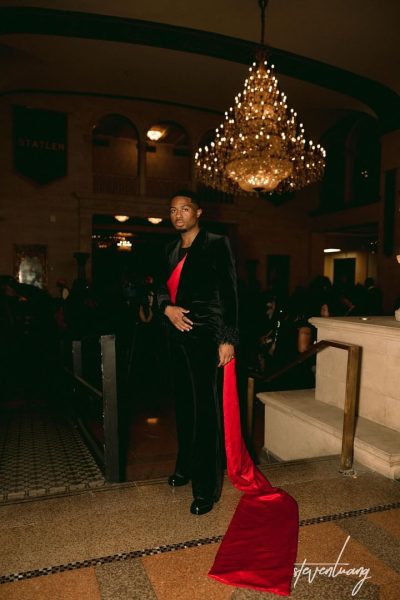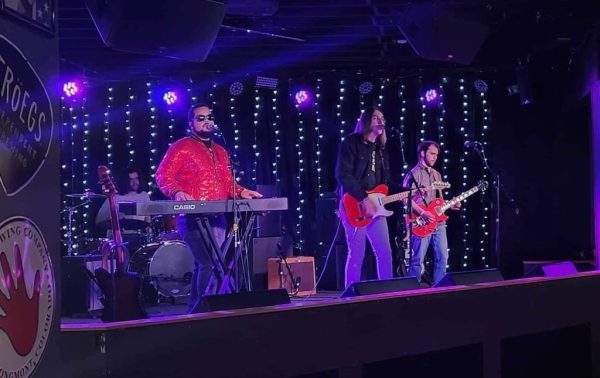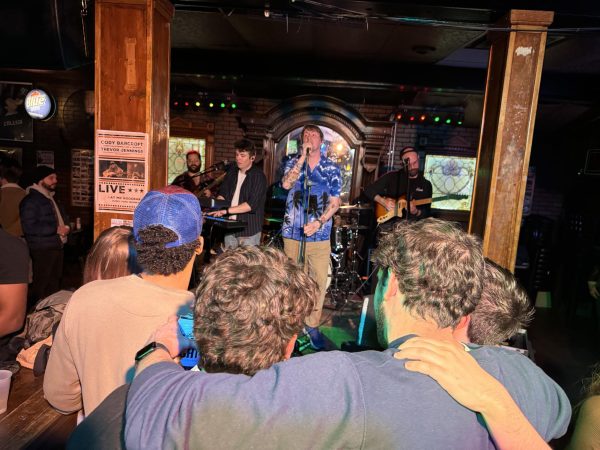Cosplay takes commitment, creativity — and sometimes tape
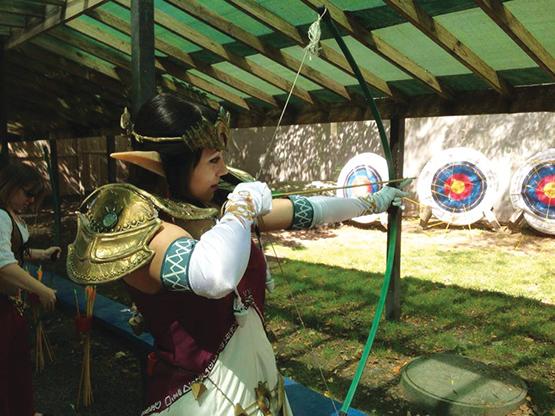
Cosplayer Maddie Sawyer transforms herself into her favorite character.
When people think of cosplay, they tend to think of a Japanese tradition that takes place at conventions. While it is true that cosplaying is practiced in Japan, it is not exactly a product of Japanese culture.
Cosplaying began in 1939 at the first Worldcon, or World Science Fiction Convention. The convention generally deals with fans of Star Trek, Star Wars and the like. In 1984, a Japanese reporter by the name of Nov Takahasi visited Worldcon in Los Angeles and used the word “cosplay” to describe what he saw during his visit. “Cos” comes from costume, and “play” comes from the acting or stage performances that some cosplayers will put on during convention gatherings.
Cosplay grew and spread to other conventions all around the world. It is no longer limited to just scifi or anime conventions, but is also a part of comic book and video game conventions.
The rapid growth of cosplay has created a culture among its participants. While there are arguments about whether cosplaying is “just a hobby” or a recognized performing art, most cosplayers would say that they love getting into the character of their favorite fictional hero or villain.
They would also say that there are two sides to cosplay culture.
The first side, the generally “nice” side, deals with craftmanship and friendly attitudes.
“Sewing is fun,” said Tamara Martin, a cosplayer of six years.
She added that a factor that leads her to cosplay is just the general communities she tends to interact with.
“It’s not so much representing the characters as it is the fun of seeing others happy to see you as a character,” Martin said.
Maddie Sawyer, a cosplayer for seven years, seems to agree with Tamara’s sentiments.
“When I’m actually dressed like my favorite character, it’s kind of a surreal experience, especially since people at conventions don’t know your name and call you by your character name,” she said.
Sawyer said the cosplayers’ craftmanship is an important part for her. It adds to the fun of dressing up if she can dress up in something she created.
Hayley Langstraat is a cosplayer of seven years as well. Langstraat is originally from Sacramento, CA, and said that most of her cosplay time was spent at conventions in those areas, at places like SacAnime and SacCon. She also understands the importance of the transition from average Joe or Jane into a flesh-and-blood adaptation of an imagined personality.
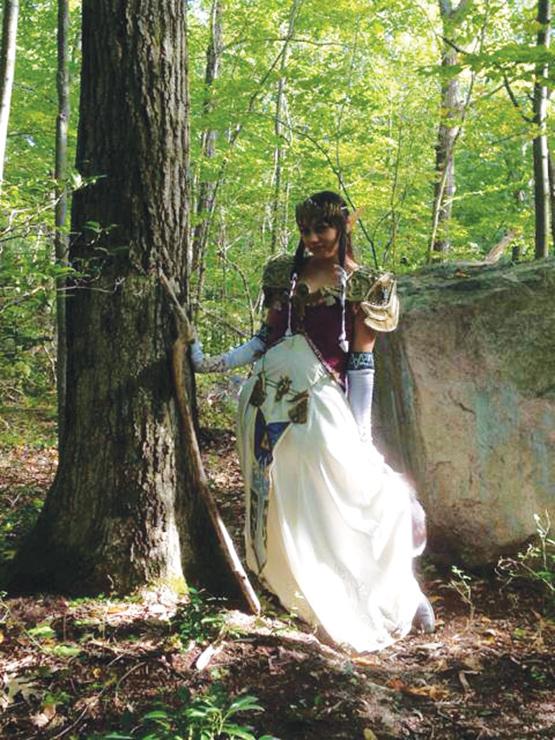
“I think transforming myself into that character, as well as seeing the reactions of the other con-goers are both really cool,” she said.
Langstraat added that cosplayers often recognize when other cosplayers need help at conventions. When a cosplayer’s costume has a rip or tear, it is not uncommon for others to appear with tape.
However, with any culture or subculture there is a disdain for certain aspects. For example, very recently, there has been a cross between cosplay and feminism, where female cosplayers who portray voluptuous women have often felt sexually harassed or unsafe around other con-goers. Stalkers and gropers have been reported at conventions.
The craftmanship aspect can also be negative. “Elite” cosplayers tend to look down on cosplayers who buy their costumes instead of crafting it themselves, mainly due to quality.
“There’s absolutely nothing wrong with buying it, especially if you don’t have the ability to make a costume yourself,” Sawyer said. “But you can always tell when a cosplay was purchased versus being made, which kind of defeats the craftsmanship aspect.”
There is a level of cosplay that most would call “bad cosplay,” where other cosplayers would have some rather negative comments for others, instead of constructive criticism.
At some conventions, there are cosplay competitions, which adds to the jealousy and unsportsman-like attitudes. Jealousy can be a big part of some of the negative parts of cosplaying.
“Some people take it way too seriously beyond friendly competition,” Sawyer said.
How do most cosplayers even begin? For Langstraat and Sawyer, it all started with Halloween.
“I was 12 and had a Kikyo from InuYasha cosplay made for Halloween,” Sawyer said. This, she said, would start her first “dressing-up” experience and her slow climb into cosplay society.
The same goes for Langstraat’s experience.
“I remember watching Sailor Moon and thinking, ‘I want to dress up like them!’” Langstraat said. “That Halloween, I really looked for sailor senshi costumes everywhere, but, I couldn’t find any.” This did not stop her from pursuing her dream of being her favorite character. Interestingly enough, Langstraat’s first actual cosplay was Samara, or Sadako from the movie “The Ring.” She had so much fun that she immediately began planning for her next cosplay.
Why cosplay at all if there is so much to all the culture, positive and negative?
“I enjoy the dressing up!” Martin said. She cannot remember how she began cosplaying, but her mother used to cosplay when she was younger, and from then on it became something of a family tradition.
There is a feeling of grace and near-celebrity status when one cosplays as well.
“I feel like a princess in Disney World and love taking pictures with people who share a love of my fandom,” Sawyer said.
She cosplays for the fun of it and to share the love of the character with all her fellow fans and con-goers.
Delving deeper into the real meat of the culture, one question in particular arises. How does a cosplayer pick what character they want to cosplay as?
For all these girls, the answers were pretty much the same: They pick their favorite characters out of a series. For Sawyer and Langstraat, Sailor Moon is definitely a favorite. For Martin, it is Youmu from a popular video game series known to most people on the scene as “Touhou.”
“What few people that recognized me [as Youmu] were really happy to see me,” she said. “I had a lot of fun with the poses for it.”
That doesn’t stop them from cosplaying as others, however. Langstraat’s favorite character from a recent cosplay was Eirin Yagokoro, also from Touhou.
“I had people fist pumping and cheering her name as I went past all day,” she said.
Whether it is an obsession, a hobby or an art, cosplay has been all over the streets and conventions for over 60 years. There doesn’t seem to be a stop to the trend, and these ladies are witnesses to the ups and downs of cosplay culture.
Email: [email protected]
Twitter: @NajeeW93






